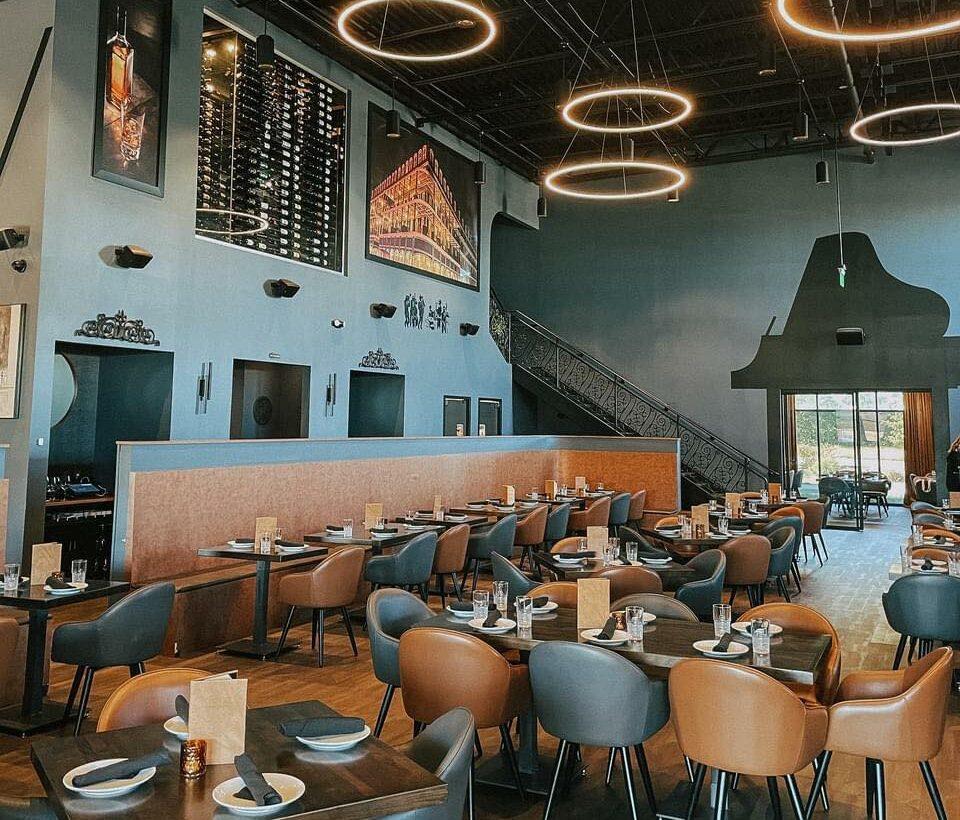Savor Genuine Oriental Food With a Pan-Asian Spin for a Cooking Experience
Embarking on a culinary trip via genuine Asian cuisine, improved with a Pan-Asian spin, uses a distinct possibility to discover the abundant tapestry of tastes that specify the area's varied culinary practices. This experience invites you to enjoy the elegant equilibrium of tastes-- sweet, salty, spicy, and sour-- harmonized by aromatic herbs and flavors. Picture the cutting-edge combination of Thai curry and ramen or the unexpected joy of sushi burritos. As you ponder these tempting meals, think about the cultural stories and historic influences that shape them, each bite using a tale waiting to be found.

Exploring Pan-Asian Tastes
In the world of worldwide gastronomy, Pan-Asian food stands apart for its amazing variety and the harmonious interaction of flavors from numerous Asian societies. This cooking approach commemorates the distinct active ingredients and rich customs discovered across the continent, creating a tapestry of preferences that is both satisfying and appealing. Secret to Pan-Asian food is its ability to balance different flavors-- wonderful, salted, spicy, and sour-- while highlighting the freshness and top quality of each component.
From the umami-rich soy sauce of Japan to the fiery chili peppers of Thailand, Pan-Asian food supplies a comprehensive palette of tastes. These aspects are often integrated in creative methods, improving recipes with layers of intricacy. For example, the use of fragrant natural herbs such as lemongrass and cilantro, common in Vietnamese and Thai food, includes a refreshing brightness to dishes, while the consolidation of coconut milk delivers a creamy, rich appearance.
The emphasis on fresh produce and aromatic spices guarantees that each dish is not just a banquet for the taste yet likewise for the detects. Pan-Asian food welcomes restaurants to get started on a culinary journey, exploring the vast and varied landscapes of Asian gastronomy with every bite.
Blend Dishes to Try
While Pan-Asian food is commemorated for its conventional flavors, the modern cooking landscape is increasingly welcoming blend meals that mix these classic components with impacts from other areas. This innovative technique not just honors the abundant heritage of Eastern cookeries yet likewise introduces unique preference experiences that appeal to modern tastes buds.
A prime example of such a combination recipe is the Korean-Mexican taco, where marinated bulgogi beef is covered in a warm tortilla, covered with kimchi and a zesty gochujang-infused salsa. This combination marries the bold, full-flavored flavors of Korea with the lively, fresh aspects of Mexican food. Similarly, sushi burritos have actually obtained appeal, amalgamating the fragile artistry of Japanese sushi with the hearty, hand-held benefit of a burrito, typically including fusion components like tempura shrimp and avocado with a drizzle of wasabi mayo.
Another notable meal is Thai curry ramen, which instills the luscious, fragrant spices of Thai curry into the reassuring broth of typical Japanese ramen, creating a harmonious blend that tantalizes the detects. These fusion dishes extend beyond plain novelty; they represent a culinary dialogue between cultures, encouraging exploration and development worldwide of Pan-Asian food.
Important Components and Flavors
To really value Pan-Asian cuisine, one have to understand the important components and spices that form its foundation. This diverse cooking style draws from an abundant tapestry of Eastern traditions, using an unified mix of flavors and appearances. Secret components include soy sauce, fish sauce, and oyster sauce, which give a full-flavored umami deepness vital to Oriental recipes. Corresponding to these are rice vinegar and mirin, providing a delicate level of acidity and sweet taste.
Fragrant components are essential, with ginger, garlic, and lemongrass being ubiquitous across different Pan-Asian recipes. These components supply a great smelling base that enhances the complexity of tastes. Flavors such as star anise, cardamom, and cinnamon present warmth and personality, resembling influences from areas like China and India.

Food Preparation Methods and Tips
Mastering the art of Pan-Asian cuisine calls for knowledge with its distinctive cooking strategies, each adding to the lively tapestry of flavors this cooking custom is celebrated for. Central to these approaches is the stir-fry, a fast cooking technique that preserves the dietary stability and vibrant shades of active ingredients. Using a wok, the stir-fry approach permits also warmth circulation, important for accomplishing the characteristic appearance and flavor equilibrium of Pan-Asian recipes.
Another essential technique is steaming, particularly common in Chinese food. This mild approach maintains the natural flavors and nutrients of ingredients, making it suitable for seafood and vegetables. Dumplings, a precious staple, typically profit from steaming, causing soft, succulent structures.
Grilling, additionally indispensable, imparts smoky midsts to meals such as Korean bulgogi or Japanese yakitori (best asian restaurant Islamabad). This strategy frequently includes marinading ingredients, permitting tastes to pass through deeply prior to cooking over an open flame or warm plate
Finally, understanding the art of balancing tastes-- pleasant, sour, salted, bitter, and umami-- is crucial. Effectively layering these components can boost a dish from regular to phenomenal, supplying a facility and satisfying culinary experience that personifies the essence of Pan-Asian food.
Dining Experiences Worldwide
Throughout the globe, Pan-Asian food provides an unmatched dining experience, celebrated for its abundant tapestry of flavors and vibrant discussions. This cooking phenomenon has actually transcended social borders, capturing the hearts and palates of food enthusiasts worldwide. In about his worldwide cities like New York, London, and Sydney, Pan-Asian restaurants work as melting pots where cooking traditions from Thailand, Japan, China, and beyond assemble, offering restaurants with an eclectic mix of meals that highlight the area's diversity.
The international appeal of image source Pan-Asian cuisine hinges on its ability to provide both authenticity and development. Cooks masterfully wed typical ingredients such as lemongrass, soy sauce, and miso with modern techniques, resulting in dishes that are both refreshingly new and acquainted. This blend permits diners to start a cooking trip that values heritage while welcoming modernity.
Additionally, eating experiences are boosted with attentively created environments that reflect the principles of Pan-Asian looks. From minimal Japanese-inspired interiors to lively Thai-themed areas, each restaurant provides an unique ambiance that matches the culinary offerings. As a result, clients are not just eating a dish yet partaking in a cultural experience, making Pan-Asian dining a genuinely worldwide phenomenon.
Verdict
The expedition of Pan-Asian cuisine uses an extensive understanding of the complex interplay of tastes and cooking customs throughout Asia. By embracing blend recipes such as Thai curry ramen and sushi burritos, the culinary journey not just highlights the adaptability of typical active ingredients however additionally showcases cutting-edge modern strategies. This gastronomic adventure, enriched by necessary spices and cooking approaches, provides an one-of-a-kind chance to value the social diversity and cooking creativity that specify Pan-Asian cuisine on a global range.
Embarking on a cooking journey with authentic Asian cuisine, boosted with a Pan-Asian twist, supplies a special chance to discover the rich tapestry of tastes that specify the area's diverse culinary practices.In the realm of worldwide gastronomy, Pan-Asian cuisine stands out for its impressive diversity and top article the unified interaction of flavors from numerous Eastern cultures. Secret to Pan-Asian food is its ability to stabilize contrasting flavors-- pleasant, salted, spicy, and sour-- while highlighting the freshness and quality of each active ingredient.
